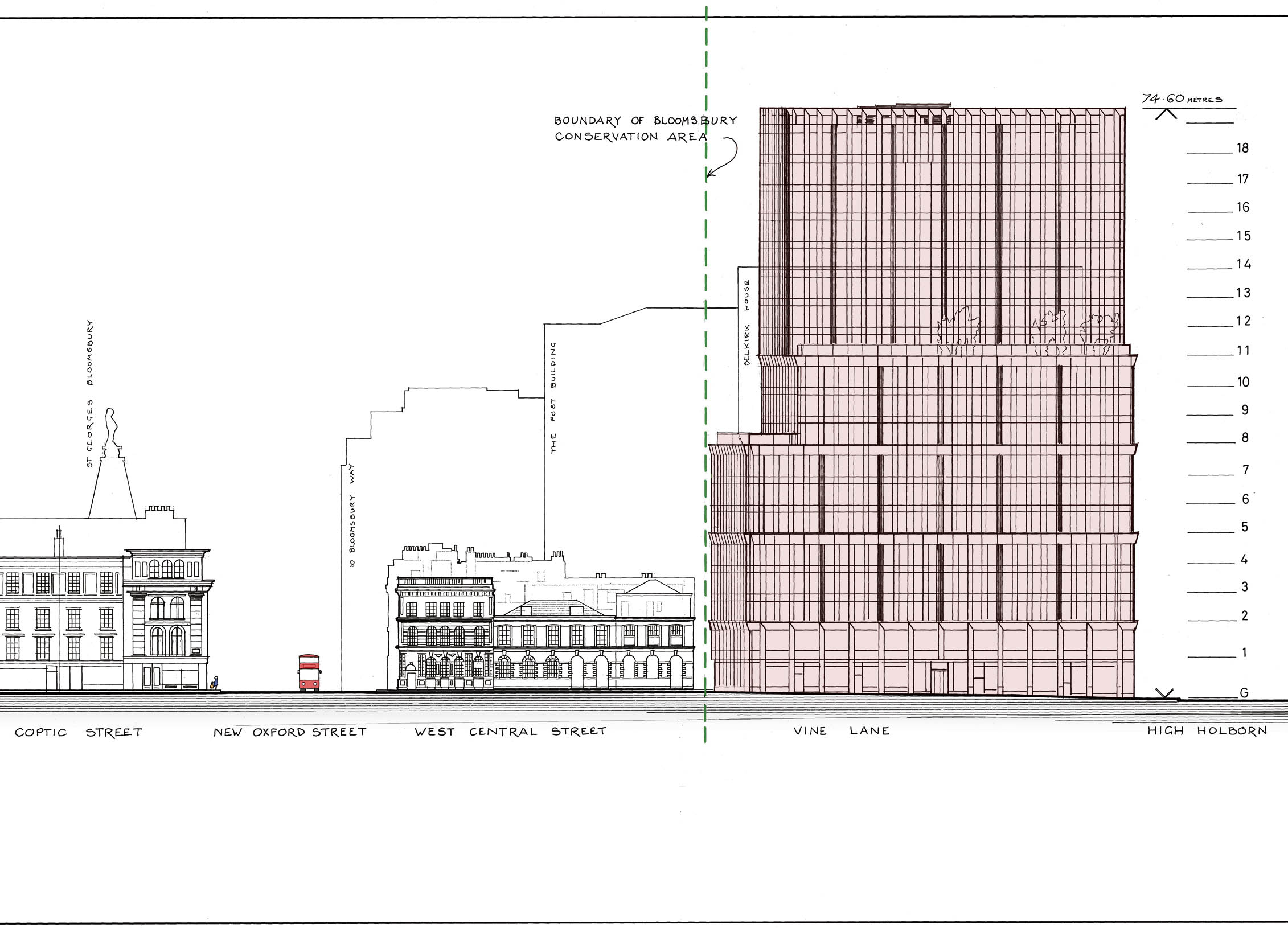Proposed scheme for One Museum Street will cause irreparable damage
Thursday, 19th October 2023

Critics say a 74-metre tower will be out of place
• THERE are many reasons why the proposed office tower block in Museum Street should be refused planning permission, many that have been well expressed by your readers over the past months.
The developer’s scheme will cause irreparable damage to the area’s architectural heritage and the environment through the release of tonnes of CO2 emissions.
What is more, the affordable housing that is meant to offset the damage is of such a questionable standard that 85 per cent of all habitable rooms will be well below the required level of daylight penetration.
Over 50 per cent will have no daylight at all due to the proximity and shadow caused by the proposed 74-metre high tower block.
Incredibly, despite these glaring defects, every indication is that Camden Council’s planners consider the housing content somehow offsets the architectural and environmental damage and will be recommending to councillors that planning permission be granted.
One aspect that has not been given much attention is the economics of the proposals. Over the past three years there have been three FVA, financial viability assessment, reports, a new one for each of the revised schemes that has been submitted to Camden Council.
All have been prepared by Gerald Eve, all have stated that the proposed scheme “is not viable” and each report states that the housing provision and financial package being offered to the council as part of the deal “was the maximum reasonable level that can be anticipated and any further financial contributions cannot be justified based upon viability”.
Though this might just be considered the concern of the so-called property “market”, when the developers inform Camden Council that the first and second phases of the development (the demolition of Selkirk House and construction of the tower block respectively) will take at least four or five years and only then will the construction of the affordable housing commence, alarm bells should ring.
If, as is likely, costs spiral due to the complexities of the scheme and there are time delays, and what with the precarious United Kingdom economic situation, what security is there that any social housing will ever be seen?
I would hope that the lessons learned from Covent Garden have not been entirely forgotten and that a “pull-it-all-down-and-start-again approach” at the One Museum Street site is likewise undesirable and unrealistic, while a retrofit and careful restoration of historic buildings is not just financially prudent but also a profitable approach to adopt for all.
PETER SCUTT, Chair
Covent Garden Area Trust
20 Bedford Street, WC2E 9HP